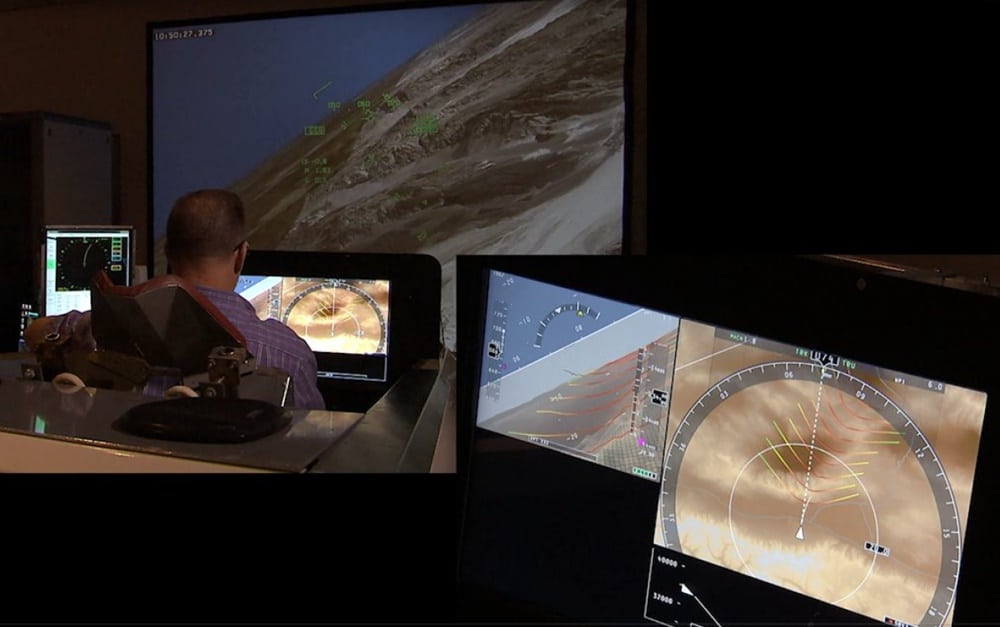
Sonic boom display integrated into NASA’s QueSST simulator at NASA Armstrong Flight Research Center. Photo courtesy of Rockwell Collins
NASA and Rockwell Collins are exploring how supersonic air travel over land can become a reality in a partnership. The effort is a part of a two-year project to give pilots guidance on how to fly at supersonic speeds, while avoiding the generation of sonic boom that would disrupt daily life for people living within the path of the jet.
Rockwell Collins said Friday it is working with the space agency to explore three areas relating to the technology in such flight, including architecture, weather data and a sonic boom avionics display. Pilots from NASA’s Armstrong Flight Research Center and some of Rockwell Collins’ own commercial pilots created working groups to understand supersonic flight operations.
“Our research with NASA has been quite successful, as we worked with its sonic boom experts to understand a complex algorithm to develop a cutting edge concept of supersonic flight operations,” said Laura Smith-Velazquez, senior systems engineer at Rockwell Collins.
In March 2017, the effort led to the creation of a sonic boom impact cockpit display. The manufacturer said this display would allow pilots to “modify flight plans in the hopes of reducing sonic boom impacts or mitigating them all together.”
NASA aims to fly its low boom demonstrator, X-plane, by 2021. It completed the preliminary design stage of its initial design stage of the Quiet Supersonic Transport, or QueSST, in June.